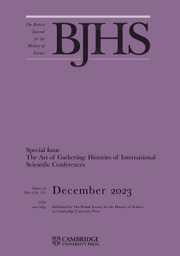If searching for the algorithm underlying Thomas Mullaney’s 2018 monumental book The Chinese Typewriter, it certainly would include deep research, a compelling and tight narrative and countless insights drawn from the tribulations and triumphs of modifying a keyboard and mechanisms on a grand scale. It is a tough act to follow. Nonetheless, Mullaney’s new book, The Chinese Computer, is up to the task. It is a wondrous encore that matches its predecessor in exhaustive research, careful analysis, elegant prose and overall virtuosity. While informed in part by his earlier book, new actors, settings and subjects spawn new inputs, processing and outputs that Mullaney presents on the history and historiography of Chinese innovation in computing, developments that reverberate throughout the world, as his subtitle suggests.
As with his typewriter book, modifying technology to create anew is at the heart of The Chinese Computer. Borrowings, adaptations and experimentation in East Asia are also themes of Honghong Tinn’s excellent new book Island Tinkerers (2025), which is on Tawain. Though tinkering and iterative design are central in both Mullaney’s and Tinn’s works, her insightful book is at the intersection of technology and business in Taiwan, as his is more at the nexus of linguistics, design, communication, writing and culture in China. To date, other English-language scholarship on China tends to focus more upon contemporary platforms and politics, such as the tremendous scholarship of sociologist Ya-Wen Lei.
As a compelling and meaningful hook, Mullaney begins his book with the misunderstood recent crisis of ‘character amnesia’ of hundreds of millions of computer users in China. He tells of how Chinese engineers and developers utilize underlying middleware of ‘input method editors’, or IMEs, and symbolic inputs to produce thousands of Chinese characters on QWERTY keyboards based on the Latin language. Users’ processes of interacting in this way have in part displaced thinking of characters themselves, hence amnesia. Of note, his book also is a meaningful contribution to the history of women and gender in computing, with key historical actors such coder Lois Lew, in the opening chapter, ‘When IMEs were Women’. This seamlessly builds upon early insights into gender by historians of US science and technology Jennifer S. Light and David Alan Grier (two authors he cites), as Mullaney translates and modifies it to a Chinese context and a particular coding specialization.
Mullaney fascinatingly and convincingly argues that creating these keyboards not only rested on the insights of their designers but also in part on the Western precedents of primary and secondary transcripts of stenography, where the primary texts were shortened and symbolic and secondary texts were translated from this to full transcriptions of what was said in complete form. Women, overwhelmingly, did this work, and Mullaney’s discussion of stenography and stenographers as antecedents further enriches the gender analysis in the book.
Importantly, Mullaney conveys that learning and technology transfer were and are multidirectional, as the digital processing techniques in China in language processing form the basis for the autocompletion of words and phrases, software applications that are now ubiquitous on computers, phones, tablets and platforms today. In this way, the book connects to recent developments in artificial intelligence. At the heart of Mullaney’s carefully woven narrative is how his historical actors – engineers, scientists, and users – and their experiences have coalesced to produce what he refers to as our current global ‘hypographic age’ (p. 20) .
This insight and argument are exemplary of how Mullaney thinks broadly as a historian first and as a specialist (on China and computing and communications technologies) second. The result is that this book meaningfully contributes to several types of history and will be useful and appreciated by multiple audiences. This includes historians of China and historians of technology, of course, as well as historians and social scientists focused on commerce, human–computer interaction, user experience, politics and culture.
I particularly appreciated the breadth and connections of Mullaney’s book. This opens the door to new vantage points, readings and literatures to consider. Mullaney approached this as a social history of technology, yet his technical understanding and articulation are superb, and the text is engaging and accessible throughout. This is no small achievement given the complex topics Mullaney addresses.
Admittedly there is certain literature I would have found interesting for Mullaney to connect to in the book, and to have his perspective upon. For instance, on the theme of inter-firm voluntary standards, the work of Andrew Russell, Laura DeNardis and JoAnne Yates; and on the history of human–computer interaction (HCI), the scholarship of computer scientist Jonathan Grudin, and historians of HCI Elizabeth Petrick and Rachel Plotnick. Though Grudin is an HCI specialist and not a historian, academic historians such as William Apsray advised him as he composed his book From Tool to Partner (2017). Grudin’s work does a strong job of conveying how ‘human factors’ as an area of study evolved to the human–computer interaction specialty in computer science, the degree of separation of this community from the user experience (or UX) community, and the impact HCI work has had on our digital world.
Just as the brilliant work of Eden Medina has been transformative and looked both within and beyond computing (the computer decentred) in the global South, so too has and does Mullaney’s equally brilliant scholarship, first The Chinese Typewriter and now The Chinese Computer. Both are transformative works of history in the vast region of the global South where three quarters of the world’s population reside, and where scholarly literature in English in the history of technology has been comparatively sparse to date. Given Mullaney’s depth of research, astute analysis and engaging and accessible writing, his two books on China will have an especially long shelf life. For years and decades to come, The Chinese Computer will be a bright beacon and model in exploring our hypographic age in China and beyond.


